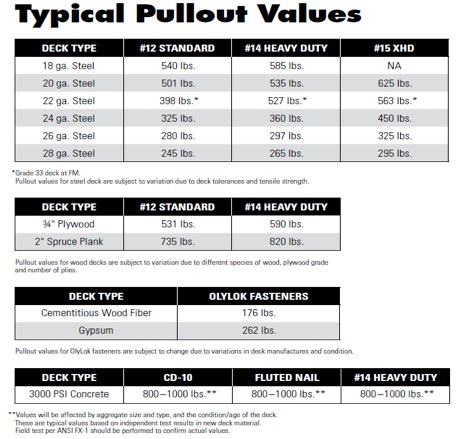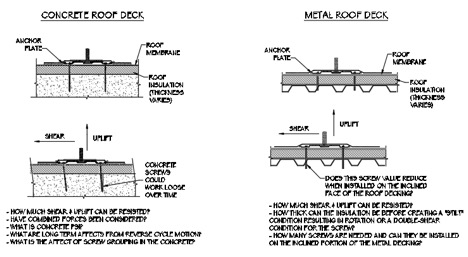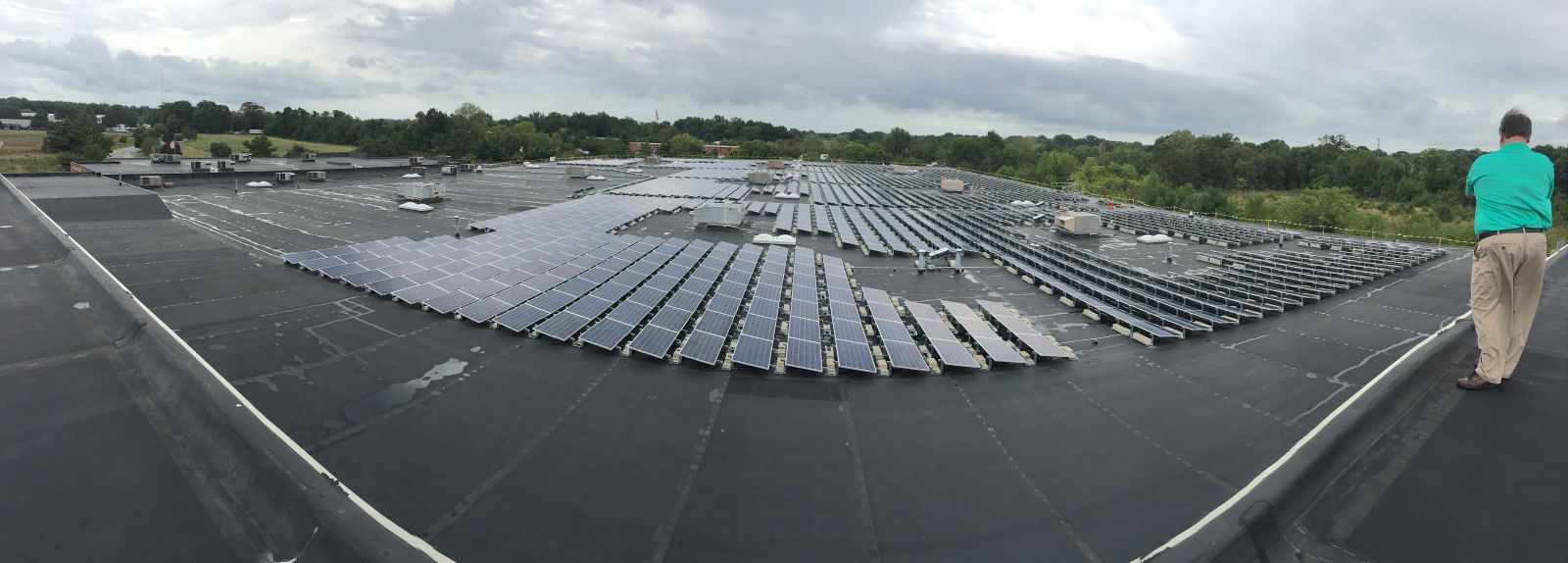"A Structural Engineer Walks Onto a Roof...." Assessing mechanical attachments for solar arrays
As a licensed structural engineer, I have been involved with the design of over 600 commercial solar rooftop projects in the mid-Atlantic and northeast region of the United States. For more than a decade now, about 85 percent of my work has involved rooftop and ground mount solar projects. Having been in the industry from the beginning, I've seen just about every iteration of ballasted racks, mechanically attached racks, and dozens of different types of roofing materials.
While there is no one-size-fits-all rack for any project, my experience over the years has been that 100 percent ballasted is an excellent solution.
- Ballasted systems are "tried & true". Thousands of these systems have been installed throughout the country, with rarely any significant issues.
- Ballast calculators, derived from hundreds of wind tunnel testing and analysis over the years, have proven to be accurate and safe.
- Using mechanical attachments can "kill" a project. Either the cost destroys the economics of many projects (each mechanical attachment runs about $300 installed), or the building owner won't allow holes in their roof membrane.
- Lastly, and most importantly, no one really knows how strong the mechanical attachments are. Honestly! Yes, there is info on the strength of screws in certain gauge metals, and there is some vague info on using screws in concrete or plywood decking. Unfortunately, I have had the unenviable task of trying to put values to some of these types of assemblies, but there is no "real" data to use as a legitimate reference. No official testing is done for any of the mechanical attachments on the market, no testing is performed using the many different roofing materials, no testing of the grouping effect of screws into roof deck materials, and no information about the "crushing or stilt" effects of placing these attachments on top of "rigid" insulation board.
As a structural engineer, I would not object to seeing more mechanical attachments on rooftop solar arrays. After all, the less weight placed on a roof, the less risk there is of that roof being overloaded. Setting aside the economics and ever-present danger of water intrusion, how do we, as designers and engineers, know how much uplift and shear resistance is provided by any given attachment to various roof types? Below is a chart that appears to answer these questions. Upon closer inspection, however, it leaves the designer in the dark.

At first glance, the chart looks like it gives a designer all the necessary information. Questions remain: Are these allowable values or ultimate values? The mechanical attachment plate has room for 6 to 8 screws, but how many do I use and how many were used to get the above values? What type of shear resistance do these provide? Have combined stresses been considered?
In reality, a designer really has no idea how strong these attachments are. It would benefit the mechanical attachment industry to invest extra time and money on research geared towards the professional engineers using those products. The problem is that thousands of attachments are being used in solar arrays, yet little is known about the correct design values to use in ideal installation conditions, let alone the dozens of variations of roofing material assemblies that exist.
 Installers most often encounter two types of roof decking: concrete and steel (as shown in the diagram). There are many questions about attaching to these roof decks that are not answered by the mechanical attachment companies. As a result, the engineers designing the solar arrays are left guessing at what the allowable strength of these connections might be. Engineers are trained to be conservative when it comes to these decisions, so we tend to apply many reductions and factors of safety to the values we ultimately decide to use. I wonder what is really gained by spending so much money on an attachment with unknown strength?
Installers most often encounter two types of roof decking: concrete and steel (as shown in the diagram). There are many questions about attaching to these roof decks that are not answered by the mechanical attachment companies. As a result, the engineers designing the solar arrays are left guessing at what the allowable strength of these connections might be. Engineers are trained to be conservative when it comes to these decisions, so we tend to apply many reductions and factors of safety to the values we ultimately decide to use. I wonder what is really gained by spending so much money on an attachment with unknown strength?
The manufacturers of most other building material products spend the time and money to get proper testing done. Because of this, we know the strength of steel and concrete with rebar, we know the shear value of a nail in various species of wood, we know the strength of plywood as flooring and roofing, etc. Yet, we still don't know the different values for a mechanical attachment installed on various roofing conditions and materials.
Whether or not ballast is chosen as the best system for rooftop solar arrays, it has been recognized for years as a tried-and-true method of securing an array to the roof. The mechanical attachment industry must give engineering designers the tools they need to properly attach a solar array. Otherwise, we're left guessing - and erring on the side of caution. The irony is that testing could prove that the attachments are much stronger than believed, which would make them more useful and possibly more economical to the project. With effective testing, a company could corner the market and make ballast a thing of the past. I don't know of any structural engineer that wants to add weight to their roof system, but, in my experience, we haven't been given enough information to feel confident taking any other path.
Chris Conwell is President of Innovative Structural Engineering-MD, Inc., a Maryland-based "turnkey" solar design firm.
Innovative Structural Engineering-MD | www.ise-md.com
Author: Chris Conwell
Volume: 2020 November/December












.png?r=9912)
